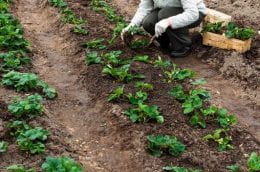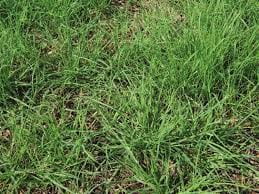 New strawberry plantings should be set early in the growing season so that mother plants become established while the weather is still cool. The mother plants develop a strong root system during this cool period when soil temperatures are between 65 and 80 degrees F. The most appropriate planting time is late March to mid-April in the northern areas of the state. Space plants 18 to 24 inches apart.
New strawberry plantings should be set early in the growing season so that mother plants become established while the weather is still cool. The mother plants develop a strong root system during this cool period when soil temperatures are between 65 and 80 degrees F. The most appropriate planting time is late March to mid-April in the northern areas of the state. Space plants 18 to 24 inches apart.
Later in the season, runners and daughter plants develop. The earlier the mother plants are set, the sooner the first daughter plant will be formed and take root. These first daughter plants will be the largest daughter plants at the end of the growing season and will bear more berries per plant the following spring. When planting is done later, the higher temperatures stress the mother plants resulting in reduced growth, weaker mother plants and delays in daughter plant formation. Fewer and smaller daughter plants produce fewer berries, resulting in a smaller crop.
Remove all flowers during the first year. New plants have limited energy reserves that need to go toward establishing the mother plants and making runners rather than making fruit. If fruit is allowed to develop the first year, the amount of fruit produced the second year is drastically reduced due to smaller, weaker daughter plants.
Keep row width at 12 to 18 inches as strawberries bear most on the edges of the row rather than the center. A rototiller or hoe can be used to keep the row at the recommended width.




 By:
By: 